Danskt rågbröd + a carrot and orange marmalade
Ten years, many loaves, and a Danish-style rye bread worth chasing. Best sliced thin, with butter, cheese, and something bright.
Welcome to The Bakers’ Cottage, a newsletter about recipes, stories, and the quiet rhythm of baking in the north. If you’re new here – thank you for joining. And if you’re already a subscriber, I’m so glad to have you back.
This week’s post is about a bread I’ve been chasing for a decade – a dense, seeded Danish-style rye, first tasted in a cabin near the Arctic Circle and remembered ever since. It’s not a finished recipe – not yet – but it’s the one I’ve been returning to lately.
And because a good loaf deserves good company, I’ve added a small-batch carrot and orange marmalade. Thick, bright, and perfect enough to spoon over rye with butter and cheese.
I’ve been thinking a lot lately about what pulls me into the kitchen. How important it is – especially in the quiet weeks between seasons – to bake not just for the sake of it, but for the joy it brings. For what it gives to the table, in all senses.
Though sometimes, curiosity takes over and I fall into long stretches of recipe testing and pages of handwritten notes. And other times, it’s just about making the kind of bread we want to eat.
Read on for the recipe, the notes, and the story that started it all.
Ten years ago, we moved to Sweden. Packed our whole London life into cardboard boxes. And started again, slowly, in the north.
Ten years ago, I also started chasing danskt rågbröd.
It began with a small bag of bread from the supermarket on our way to Lövnäs – where our friend Daniel has a cabin, in the inland – the forested interior of northern Sweden, close to the mountains and the Arctic Circle.
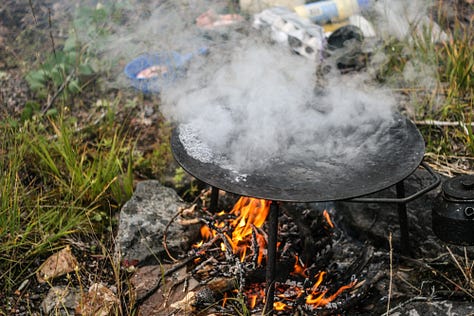
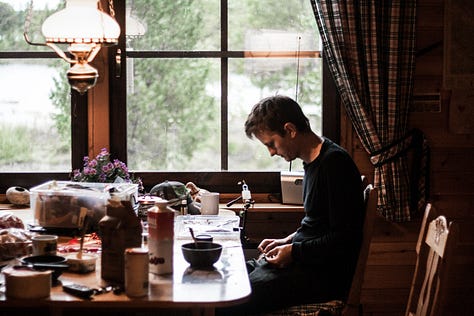







The slices were dense and dark, packed with seeds. I didn’t think much of it at the time – only that it felt solid in my hand, heavier than it looked. But the next morning, at the breakfast table – by the kitchen window, overlooking the lake we were going to spend the day on: fishing, stopping at an island and gathering wood, lighting a fire and cooking lunch, watching the sun set and rise almost at the same time – yes, there, I took a bite and paused.
The crumb was moist and closed – almost gelled – and the flavour lingered: sour and nutty.
Since then, I’ve baked many versions. I was looking for a bread made mostly of cracked rye and seeds – bound with sourdough and just enough flour to hold its shape. A loaf that bakes low and slow until the crumb darkens and sets.
I wrote about the very first attempt on my blog, and even started a series called Chasing rugbrød. Perhaps I’ll move it here in time. The other recipes are still sitting in drafts.
Danish rye bread #3
This loaf is adapted from one I baked early on in my Chasing rugbrød series. It’s made entirely with rye – cracked and coarse – and held together with a larger amount of sourdough than my first two trials.
But otherwise, it follows the traditional method for Danish rye, which peculiarly starts with a soaker: rye, toasted seeds, and water. The remaining ingredients are stirred in. No kneading. Just a batter you scrape into a tin, proof at room temperature, and bake until the crust turns deep brown and the crumb is set.
There’s more to explore, but for now, this loaf feels like home. It’s close. And it’s good. Sliced thin, with salted butter, cheese, and a spoonful of jam.
Notes
On the soaker
Most often, I prepare the soaker the night before. But when I’m in a hurry, I’ll boil the water before adding it to the dry ingredients. Stir well, then leave it to cool for about 3 hours before using.
On cracked rye
Cracked rye, sometimes sold as rye chops or steel-cut rye, is coarse pieces of whole rye berries. When soaked, it softens just enough to keep a bit of bite. It gives the crumb texture and helps the loaf hold together.
On toasting the seeds
Toasting the pumpkin and sunflower seeds brings out their nuttiness and gives the bread more depth. I do this in a dry frying pan over medium-high heat, stirring constantly until golden and fragrant.
The linseeds are added raw, as I find that they don’t benefit from toasting.
On preparing your sourdough starter
If your sourdough starter lives in the fridge, take it out 2–3 days before baking. Feed it twice a day at 12-hour intervals using a 1:2:2 ratio – that is: 1 part starter, 2 parts water, and 2 parts flour by weight.
For this loaf, I used coarse rye flour to feed my starter. Since the batter requires 360 g of starter, make sure to feed yours enough to have this amount – and a little extra to keep it going.
The goal is a bubbly starter with a mild tang.
If you bake regularly and your starter is already at room temperature, just make sure it’s been recently fed and is at peak activity before mixing the dough.
On fresh yeast
I work exclusively with fresh yeast. You’ll find it in the fridge section at every supermarket in Sweden.
If using instant dry yeast instead, use about one-third the amount:
10 g fresh yeast = 3 to 4 g instant yeast (roughly 1 tsp).
You could also leave the yeast out and rely on sourdough alone, but the proofing will take longer.
On malt extract
It’s been difficult for me to find malt extract, so I usually replace it with Swedish brödsirap – a bread syrup made with molasses and malt extract.
MAKES one loaf
For the soaker
55 g sunflower seeds
30 g pumpkin seeds
175 g cracked rye
35 g linseeds
260 g water
For the dough
All of the soaker
360 g active rye sourdough starter
5 g fresh yeast
95 g coarse rye flour
12 g fine sea salt
1 tbsp malt extract, optional (see note above)
To top
2 tbsp coarse rye flour
Make the soaker
The night before the day you’re planning to bake, toast the pumpkin and sunflower seeds in a hot dry frying pan over high heat, stirring constantly, until golden and fragrant.
Place them in a heatproof bowl and add the cracked rye, linseeds, and water. Cover with clingfilm and leave at room temperature overnight.
Also, feed your sourdough starter using a 1:2:2 ratio (see note above).
Make the dough
The next morning, butter a 1.5L loaf tin.
In the bowl of a stand mixer fitted with the paddle attachment, combine the soaker, sourdough starter, and fresh yeast (just crumble it in). Add the coarse rye flour, salt, and malt extract, if using.
Mix on low to medium speed for about 5 minutes, or until everything is evenly combined. The dough should be thick and sticky – like a coarse porridge.
Scrape the dough into the prepared tin and smooth the top, cover loosely with clingfilm, and proof at room temperature for 1½ hours.
Bake the loaf
Towards the end of the proofing time, preheat your oven to 190°C / fan 170°C.
When the loaf has finished proofing, brush the top with water. Prick the dough all the way to the bottom of the tin using a skewer – this helps release any large air bubbles.
Sprinkle the top of the loaf with the coarse rye flour.
Bake for 1–1½ hours, or until a probe inserted into the centre of the loaf reads 99–100°C.
After baking
Once baked, remove the loaf from the oven and unmould it carefully while still hot. Let it cool on a wire rack, then wrap it in a plastic bag or clingfilm – this helps redistribute the moisture evenly throughout the bread.
Leave to cool completely before slicing. Ideally overnight or longer – the crumb improves with time. I like mine best from day 3 onwards.
This bread will keep for 5 to 7 days at room temperature, wrapped in a tea towel and stored in a plastic bag or beeswax wrapper.
I’ve been spreading mine with salted butter, topping it with thin slices of sharp cheese, and spooning over a carrot and orange marmalade.
The recipe is just below.
Carrot and orange marmalade
A small-batch preserve with a thick, spreadable texture – just right for layering onto seeded rye with butter and cheese.
This marmalade is adapted from a French recipe by Christine Ferber – Alsace’s own jam queen – blending carrots, orange, lemon, and just enough sugar to bring it together. The carrots keep their texture, and their earthiness is balanced by the brightness of citrus.
MAKES two 250mL jars
400 g finely grated carrots (about 600 g before peeling)
400 g caster sugar
150 g freshly squeezed orange juice
Zest from 1 untreated orange
45 g lemon juice (from 1 lemon)
Combine the grated carrots, sugar, orange juice, and zest in a wide saucepan.
Bring to a gentle simmer over medium heat, stirring occasionally. Off the heat, stir in the lemon juice.
Pour the mixture into a ceramic or glass bowl. Cover and chill overnight.
The next day, return the mixture to the pan and bring to a boil. Boil over high heat for about 8–10 minutes, stirring gently but constantly, until most of the liquid has reduced.
Test for set – it should just begin to hold on a cold plate.
Pour into clean jars, seal, and let cool.




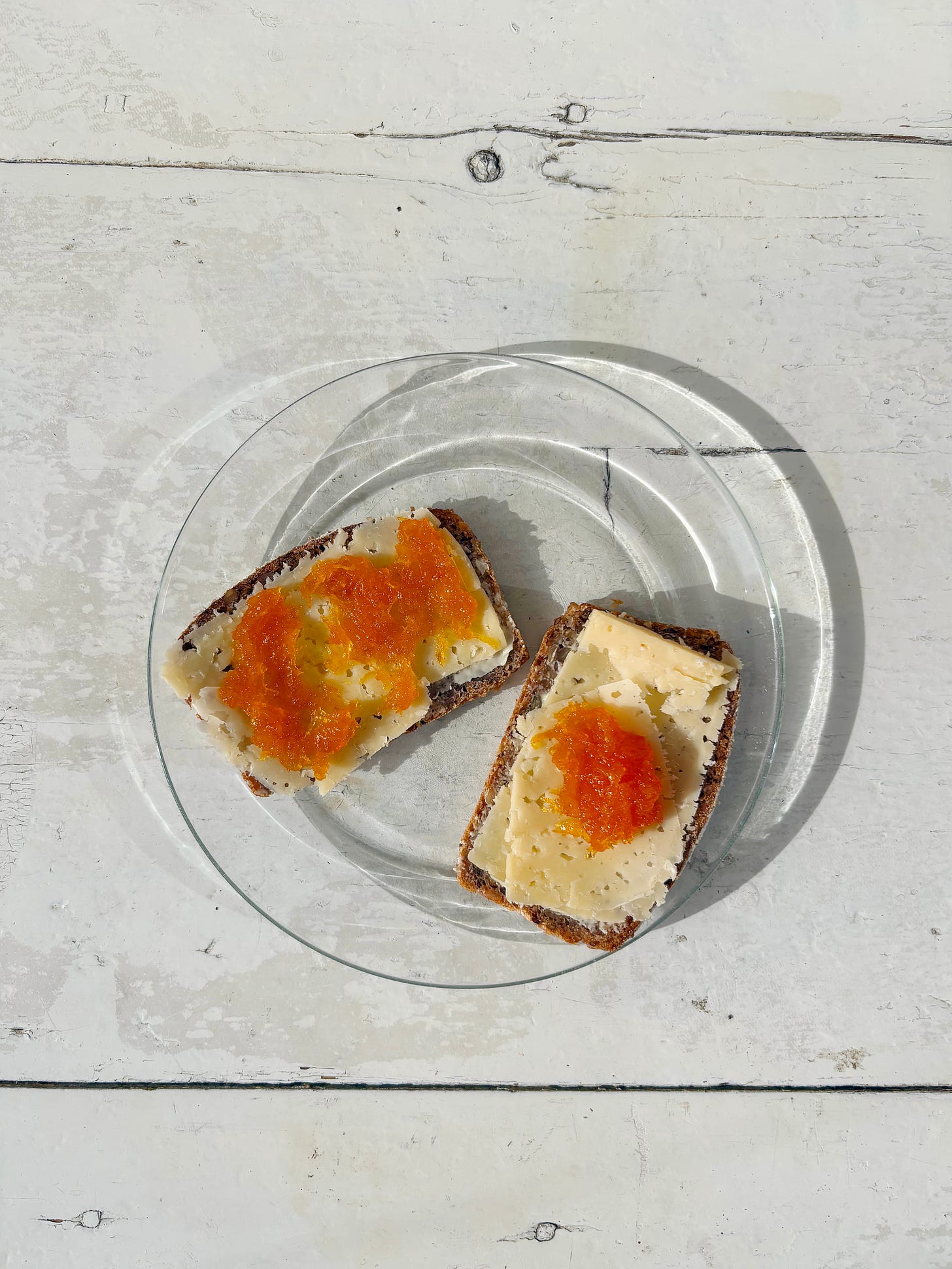

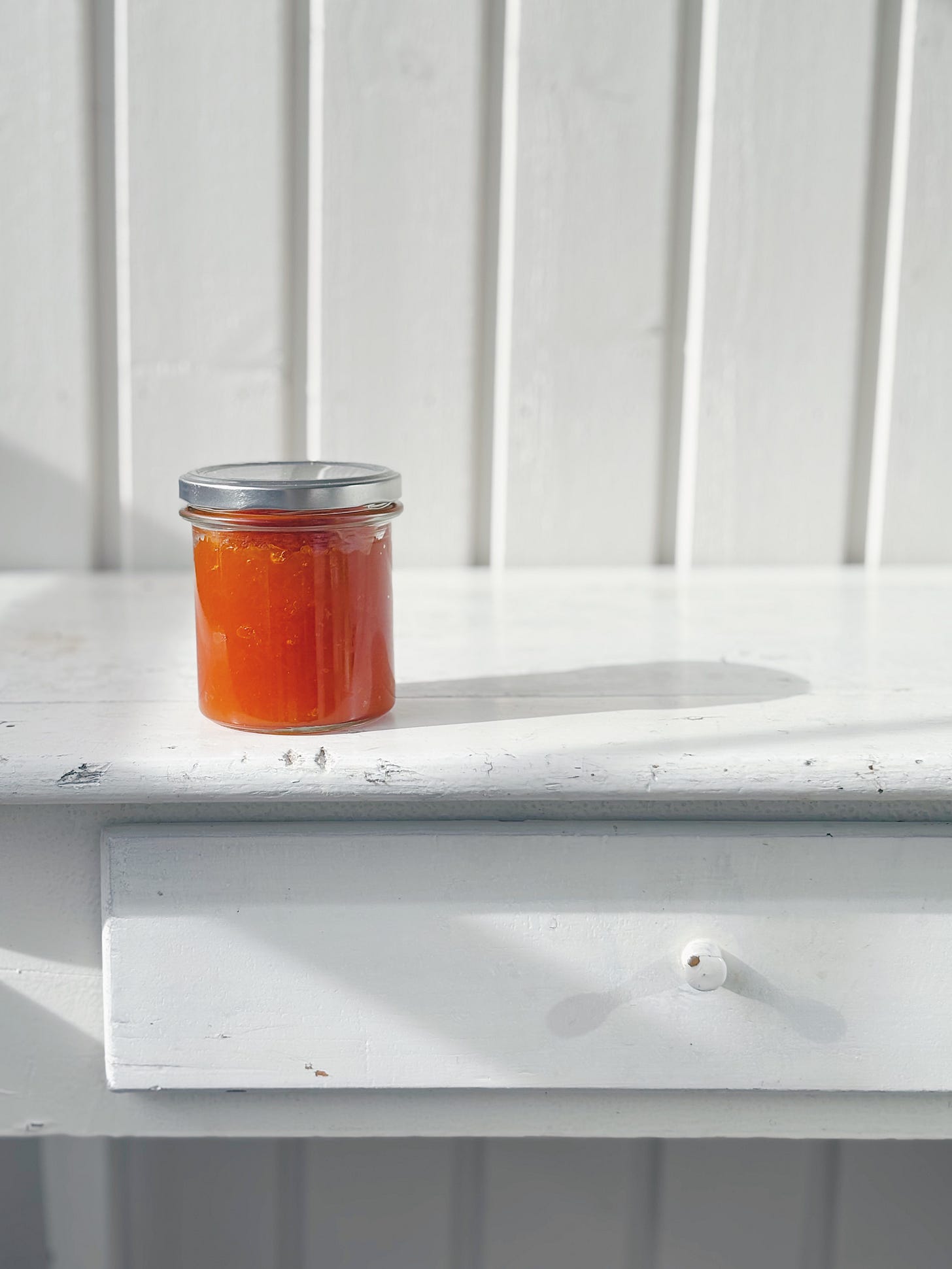
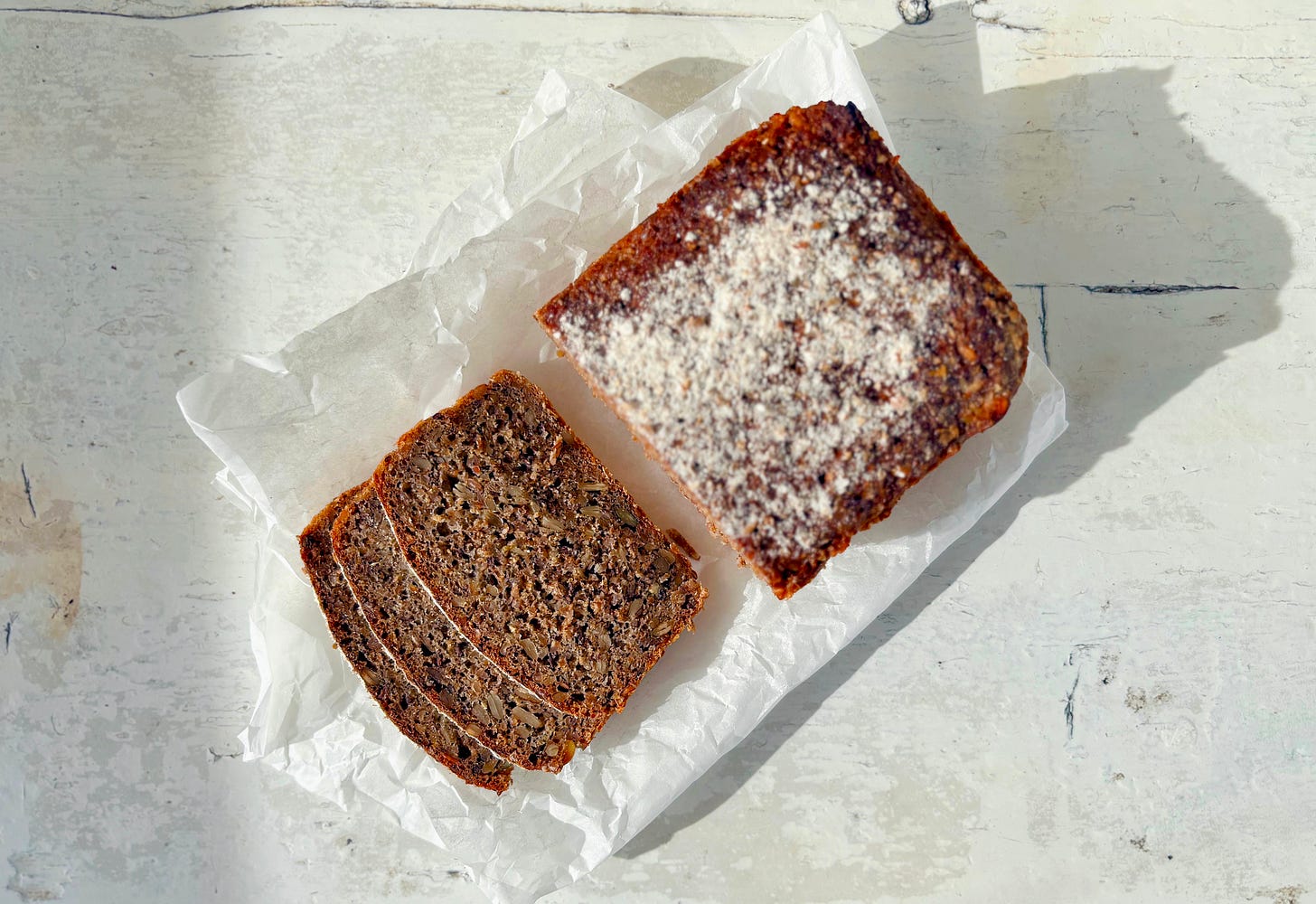
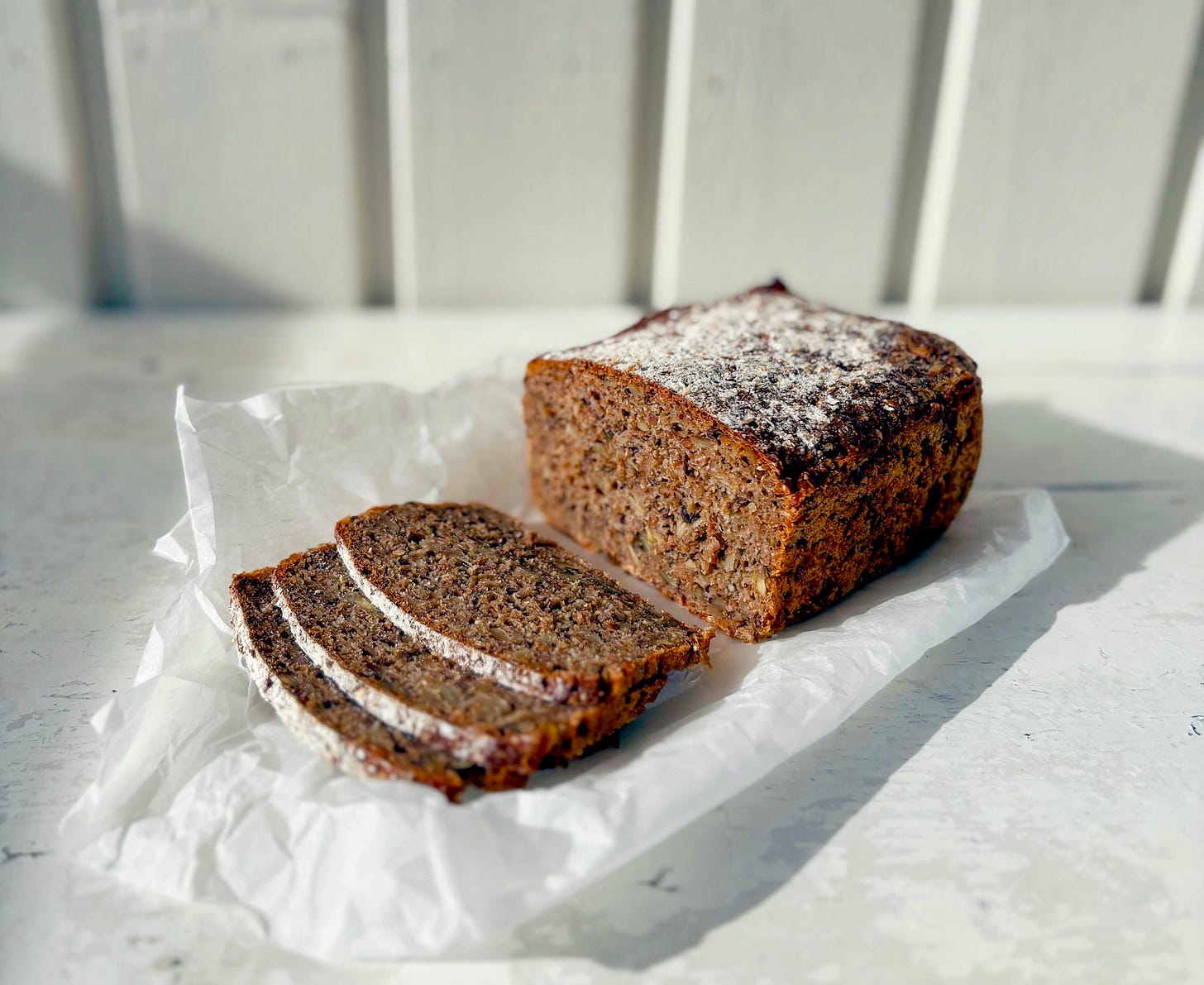
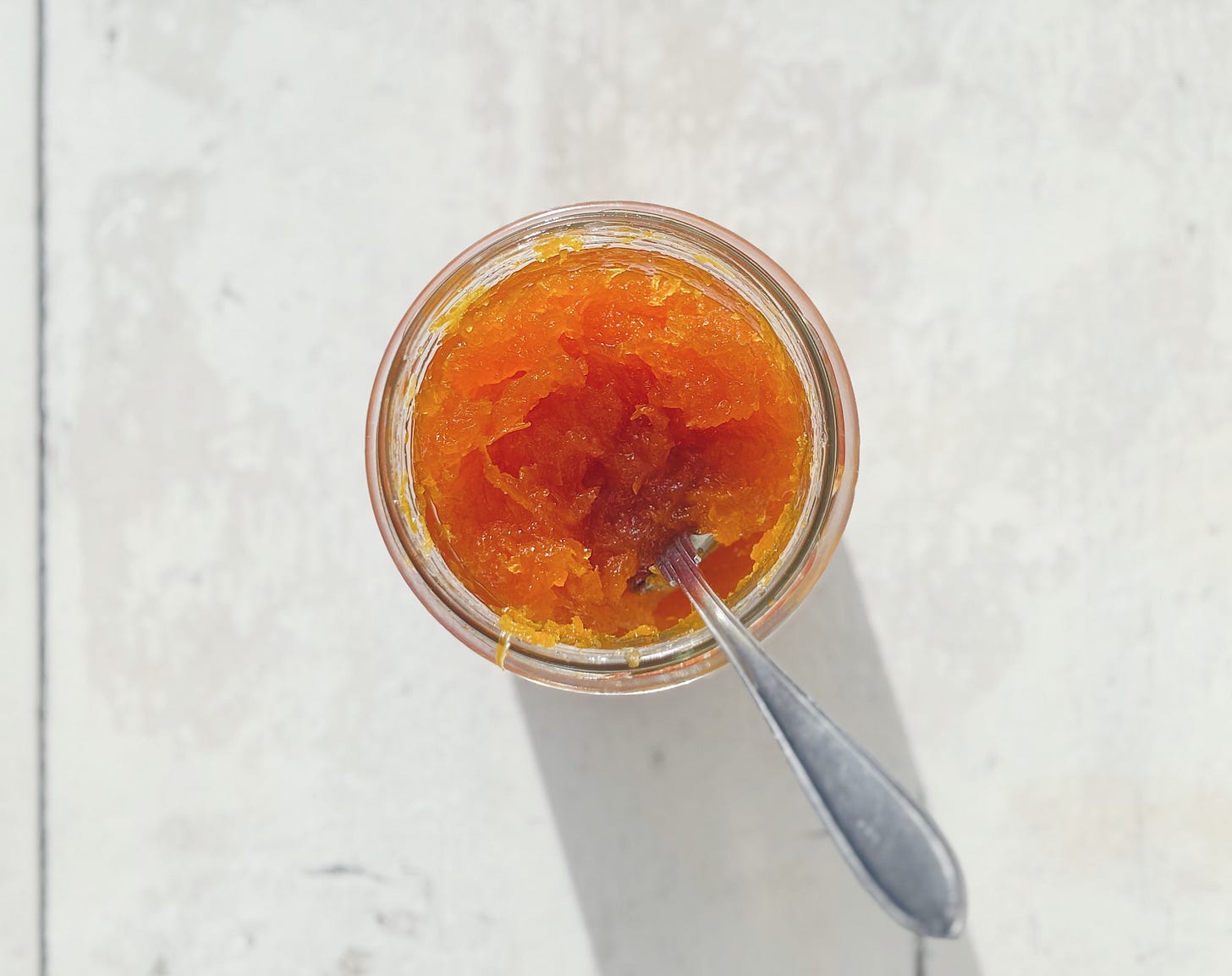
Oh, what a bread! And thanks for the bonus carrot and orange marmalade, Fanny. Sounds lovely 🧡
This post is perfect, Fanny. Delicious bread AND a colourful jam to lift the spirits!
As much as anything else, you have reminded me that it is far too long since I made a dark rye. Those deep, nutty flavours and aromas as you mix, make, bake and, finally, toast! Mm mmm.
Do you have a favourite book/source of inspiration on the topic?
I have my own favourites but I'm always interested to learn of other bakers'/countries' methods and accompaniments.